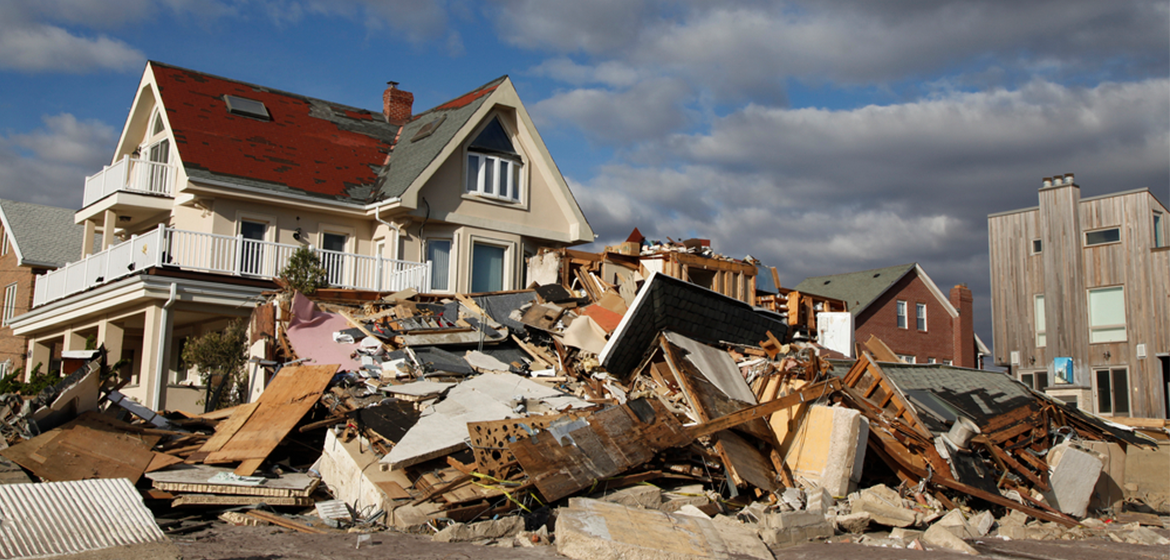8 Common Property Damage Types Caused By Hurricanes

Hurricanes, with their fierce winds and torrential rains, unleash unparalleled destruction in their path. Homeowners often find themselves grappling with significant property damage by hurricanes, which can be overwhelming, both emotionally and financially. Recognizing the most frequent types of damage can help in preparedness and prompt post-storm response. This article delves into the widespread repercussions of these natural calamities and offers insights into potential recovery paths.
- Roof Damage: The First Line of Defense
The roof, being the most exposed part of a property, bears the maximum brunt of a hurricane. High-speed winds can rip off shingles, tiles, or even the underlying structure. Apart from direct wind damage, flying debris can puncture or dent the roofing material. Water seepage due to damaged roofs can lead to a cascade of other problems, including mold growth and structural damage.
- Window and Door Breakage: Vulnerable Access Points
Windows and doors are particularly susceptible to breakage during hurricanes. The intense pressure differentials can shatter even the strongest of windows, while flying debris poses additional risks. Broken windows and doors can further allow rainwater to infiltrate homes, exacerbating the damage.
- Flooding: The Silent Destroyer
With torrential rains accompanying most hurricanes, flooding becomes a widespread issue. Rising water levels can cause extensive damage to the foundation, walls, and interiors of properties. The aftermath of flooding, if not addressed promptly, can lead to mold and mildew, further deteriorating the property’s health.
- Fallen Trees and Landscaping Damage
Mature trees, while an asset under normal conditions, can turn into potential hazards during hurricanes. Uprooted trees or broken branches can crash into homes, vehicles, and other structures, causing significant damage. Furthermore, hurricanes can wreak havoc on well-maintained landscapes, washing away plants and shrubs and even causing soil erosion.
- Structural Failures
The sheer force of hurricanes can lead to foundational shifts, wall collapses, or even total property destruction in severe cases. Older properties, or those with pre-existing structural vulnerabilities, are particularly at risk. This kind of damage necessitates immediate attention, as it directly impacts the safety of the property’s occupants.
- Electrical and Appliance Damage
Water intrusion, either through damaged roofs or flooding, can compromise a property’s electrical systems. This not only poses an immediate danger due to potential electrocution but also can damage appliances and electronic devices. Power surges, common during storms, can further exacerbate this damage.
- Mold and Mildew Growth
Post-hurricane, the combination of humidity, warmth, and water intrusion creates a conducive environment for mold and mildew growth. If not addressed promptly, this can not only compromise the structural integrity of a property but also pose significant health risks to its occupants.
- Vehicle and Outdoor Structure Damage
Detached garages, sheds, gazebos, and vehicles are often overlooked when assessing potential hurricane damage. However, these structures and vehicles are equally susceptible to wind, water, and debris damage. They require equal attention post-storm to ensure complete property recovery.
The Path to Recovery: Seeking Professional Help
Post-hurricane recovery can be a daunting task. Homeowners often find themselves overwhelmed, unsure of how to navigate the complex process of assessments, repairs, and insurance claims. This is where professionals offering services like public adjusting can step in, guiding property owners through the intricate maze of damage assessments and claim processes.
Moreover, to ensure a comprehensive damage evaluation, especially for complex structures, preliminary inspections can be invaluable. Such inspections provide a holistic understanding of the extent of damage, helping in prioritizing repairs and ensuring that insurance claims are adequately substantiated.
Understanding the varied types of property damage caused by hurricanes is the first step in a long journey of recovery. While the immediate aftermath can be overwhelming, with the right professional guidance and prompt action, homeowners can rebuild and restore their properties to their former glory. It is essential to be proactive, both in terms of pre-hurricane preparedness and post-storm response, to minimize potential damages and ensure a smoother path to recovery.